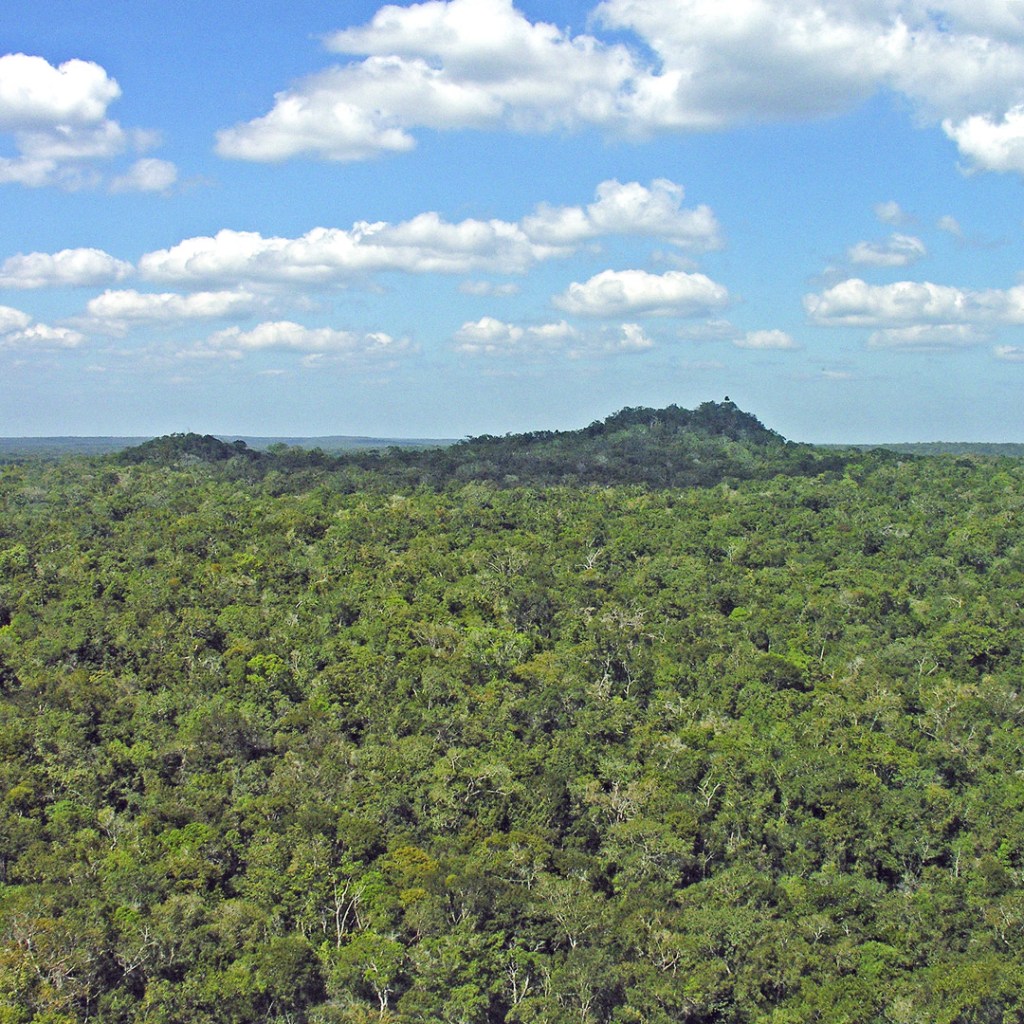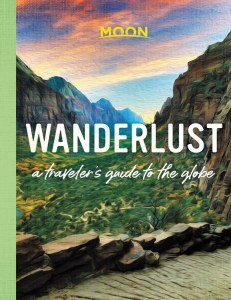Getting to El Mirador and Seeing the Pyramids
This massive city, rediscovered in 1926 and photographed from the air in 1930, but only recently the focus of ongoing excavations, holds great promise both as a tourism destination rivaling the magnitude of Tikal and as an important piece in the puzzle concerning the advancements of Preclassic Maya society. El Mirador flourished between 200 b.c. and a.d. 150 (about 1,000 years before Tikal), and has revealed a greater level of sophistication than once thought concerning early Mayan society. It is thought to have been home to 80,000 people at the height of its occupation. Its sheer size and the earliness of its development have earned it accolades, such as the “Cradle of Mayan Civilization.”

The site sits on a series of limestone hills at an altitude of just over 240 meters (800 feet) and occupies about 16 square kilometers. El Mirador’s dominating feature is the presence of two large pyramid complexes, El Tigre and La Danta, running east to west and facing each other. The architecture is characterized by triadic structures composed of one large temple pyramid flanked on either side by two smaller pyramids, a pattern that is repeated elsewhere in the Preclassic sites of the Mirador basin.
The base of the El Tigre Complex is as large as three football fields, while the large temple dominating the structure reaches 55 meters (180 feet) in height. The lower flanking pyramids contain gigantic stucco jaguar masks.
The city’s Central Acropolis takes the form of a narrow plaza bordered on one side by a series of small buildings. Moving south from the El Tigre Complex, you come to the Monos Complex, another triadic structure named after the howler monkeys tending to congregate in this area.
The colossal La Danta Complex lies to the east of the main plaza and Central Acropolis. Although technically lower than El Tigre, it rises to a height of 70 meters (230 feet) thanks to its elevated location on a hillside, making it the tallest structure in the Mayan world. Its base is equally impressive. There are jaguar and vulture heads built into the sides of the smaller temples here and the spectacular views from the top of the pyramid afford views of nearby Mayan sites, including Nakbé and Calakmul.
Newsletter Signup
By clicking ‘Sign Up,’ I acknowledge that I have read and agree to Hachette Book Group’s Privacy Policy and Terms of Use
Other interesting site features include the León Pyramid, at the northern edge of the city, and Structure 34—a Preclassic building with the oldest known Mayan standing wall.
Excavations are being done under the direction of UCLA’s Dr. Richard Hansen, who has led a larger project aiming to protect the entire Mirador basin as an ecoarchaeological preserve. The preservation of its delicate monuments is being aided by technological advances, including housing structures under polycarbonate roofs designed by Hansen and his associates, so as to protect them from rain and ultraviolet light.
In 2009, Hansen and Guatemalan authorities unveiled the discovery of a frieze at El Mirador depicting a scene from a Mayan sacred book, the Popol Vuh, in which the mythical “Hero Twins” visit the underworld. According to Hansen, the frieze lends further credence to the Popol Vuh’s creation myth and its authenticity as a Mayan document, despite its first translation well into the Christian era in the 1700s. The frieze took three months to excavate and was found while archaeologists were looking for water reservoirs at the site.

Getting to El Mirador
Getting to El Mirador is not an easy task, though you wouldn’t know it judging by the readiness of certain Flores tour operators to book you on a trip even at the height of the rainy season. The trek to El Mirador is not for the faint of heart and should not be attempted July-November, when the mud is knee-deep throughout most of the trail. In the worst of places, a rope is tied to the end of a tree and trekkers must pull themselves through shoulder-deep mud. This is, after all, a tropical forest and the terrain is characterized by swamplands. Add to this the incessant buzz of hungry mosquitoes, extreme heat and humidity, and you start to realize why so few people make it to this remote site. Your best bet is to attempt the trek at the height of the dry season between February and April. Mel Gibson has visited on several occasions. He arrives by helicopter.
Treks begin in the village of Carmelita, inside the biosphere reserve at the end of the line for the road from Flores. Carmelita consists of a small cluster of houses grouped alongside the road with a few basic services such as a comedor, a small general store, and simple accommodations. The journey usually lasts five days. The first night is spent at El Tintal and the next day is a grueling hike that puts you at El Mirador close to nightfall. You spend two nights at the ruins before the two-day hike back to Carmelita. Trip prices vary, but expect to pay about $250 per person for two people. Some outfitters do the trip in seven days, allowing more time at El Mirador and stopping en route at Nakbé and Wakná. Mules carry the supplies, but you can also rent additional mules or horses for riding. This is particularly recommended if you make the journey in the wet season. Expect to pay an extra $10 per day for riding horses.
Be very careful in your selection of an outfitter to get you to El Mirador. The community of Carmelita, with help from NGOs, has trained and licensed guides to take visitors on the hike as part of a sustainable tourism initiative contributing to the ecologically friendly livelihood of local residents. While it’s a nice idea in theory, it may not always be the best way to go. Not all of the local guides have the same skills or experience in running the trek and you run the risk of getting one of these lesser-experienced guides if you book your trip directly through the community. The task invariably falls on whoever is available to take you at that particular time. Further complicating the scenario is the presence of “gypsy” guides falsely claiming to be part of the local tourism committee.

That being said, you can save some money by taking public transport to Carmelita and then hooking up with the local Comité de Turismo (tel. 7861-1809, Spanish-only, ask for Brenda Zapata). The trip should cost about $235 per person for two people. Book at least a few days in advance, as the supplies and food must be brought in from Flores and the guides must go into town to get them. If you do go this route, make sure the guide buys adequate amounts of food for the duration of the trip. A common complaint is that food runs low halfway through the trek. You should also verify that there is enough water. Have the guide unpack all the supplies and show you exactly what you’re taking. Don’t hesitate to tell the guide if the food supply is inadequate for the trip’s duration. In the worst of cases, you might buy a chicken to eat from the guards at the site, though it won’t be cheap and there’s no guarantee they’ll have one to sell to you.
A final consideration if booking directly through the community is that the guide will want the money up front so as to buy food and supplies. This may or may not be an inconvenience to you, but it bears mentioning nonetheless. The more established Flores tour operators take credit cards and arrange everything for you in advance.
This leads us to your second option, that of booking the trip from Flores through one of several recommended outfitters. Although any Flores travel agency will claim to offer the trip, the quality of the service is not the same and you run the risk of getting set up with an inferior guide at premium prices. These outfitters may or may not contract the services of the local Carmelita guides. Matthias, one of the friendly owners of Los Amigos Hostel (tel. 5584-8795 or 5521-2873) in Flores, organizes trips using local guides for $200 per person for two people and says he is happy with his current selection of guides after much trial and error. Another guide recommended by readers is Henry Sánchez (tel. 7821-0115 or 5751-3241, sanchezhenry5@hotmail.com).
Part of the current administration’s plan to bring more visitors to El Mirador under the banner of Plan Cuatro Balam involves the construction of visitor facilities. These include two new tent platforms, a kitchen, eating area, hammock lounge, showers, and toilets. Facilities at Carmelita have likewise been improved with a visitor information center, a gift shop selling maps and souvenirs, and toilets.
Newsletter Signup
By clicking ‘Sign Up,’ I acknowledge that I have read and agree to Hachette Book Group’s Privacy Policy and Terms of Use
Pin it for Later


